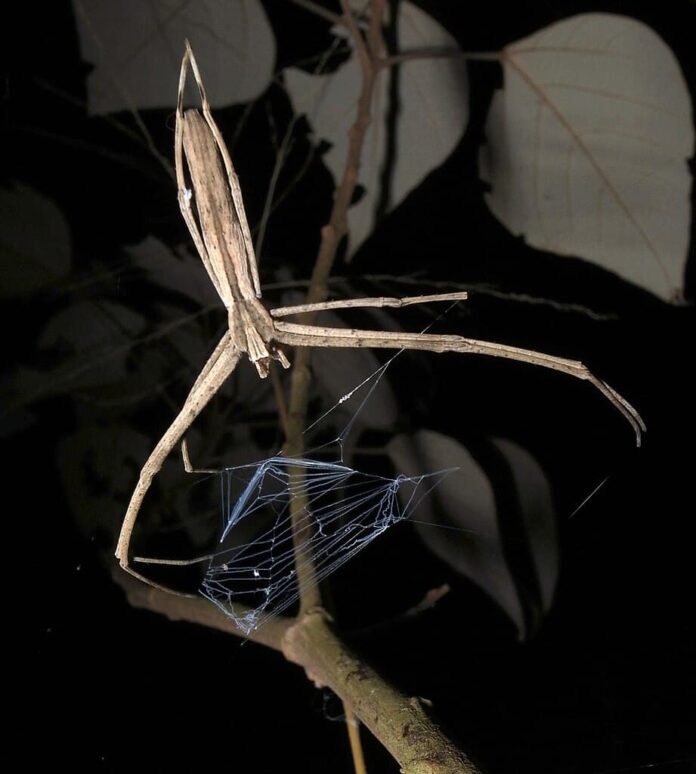Remember “Don’t judge the book by its cover.”? This is exactly the theory to apply when you see an ogre-faced spider because this arachnid is harmless to humans. I mean the appearance and size can be pretty scary to look at but these spiders are not dangerous. It gets its name from its physical resemblance to the mythical creature, Ogre. We should know more about them, and all of the details are below.
1Appearance

An ogre-faced spider is a little over 1 inch long, and over 3 inches when they stretch their legs. Ogre-faced spiders have light brown elongated slim bodies with 8 long thin legs that have random brown patterns. These patterns help make them blend even better because they have the same coloration as a twig. You can differentiate males from females by the large bulbous pedipalps that the males possess. At the same time, males have extremely thin abdomen and exceptionally long legs that females lack.
An ogre-faced spider has posterior median eyes that gift them with excellent night vision. In fact, their vision is even more efficient than the eyes of cats and owls. These posterior median eyes are larger than the rest of the eyes, giving them the impression of having only two eyes. Their eyes are also the largest eyes of any spider. On top of that, these spiders also use hairs and joint receptors on their legs to aid their hunting. This ability allows them to pick up sounds from at least 2 meters away. That brings them another reputation of being able to hear despite the fact that spiders have no ears.
2Behavior

Ogre-faced spiders spend their daytime hanging upside down from a silk line, and they only emerge at night to hunt. When resting, they extend and tighten their front legs forward and their hind legs back to resemble a twig. This allows them to camouflage with their surroundings to avoid predators as they stay completely still. Ogre-faced spiders also do the same when they feel threatened so confuse a predator in case it approaches them.
Despite the appearance, these spiders are not dangerous or harmful to humans at all. In fact, they are very docile. They just trying to mind their own business by trying to look like a dead twig. Is the bite painful? Not really, a bite from an ogre-faced spider only itches a little bit and that’s pretty much it.
3Feeding & Habitats

The common prey of these spiders is flying insects like ants, beetles, crickets, roaches, and more. Also goes by the name net casting spiders, the ogre-faced spiders do exactly what its nickname says. Ogre-faced spiders are nocturnal, and their excellent night vision allows them to cast nets in low-light conditions with perfect accuracy. They catch prey by stretching a web across their front legs before propelling themselves forward. When they stretch their front legs, the size is two or three times bigger. That is just big enough to entangle and trap any small prey that touches the net. The thing is that this stretchy net is not sticky, it contains threads that entangle its victim.
I no longer feel surprised knowing that every weird-looking animal comes from Australia, everything that is creepy comes from there. However, the distribution of these arachnids also spreads through other parts of the world such as Africa and the Americas. Within their range, they live in a wide range of terrestrial habitats such as coastal hammocks, oak forests, and pine forests.
Related Post: Wrap-Around Spider Facts




